U-Pb Isotopic Dating of Monazite in Granite from the Changjiang Uranium Orefield, Northern Guangdong Province and Its Geological Significance
-
摘要: 长江铀矿田位于诸广山复式岩体中南部,是典型的花岗岩型铀矿田。前人采用锆石U-Pb定年方法对赋矿花岗岩进行了年代学研究,但由于全岩和锆石铀含量较高,锆石往往发生了蜕晶化,可能导致锆石U-Pb定年数据散乱,影响锆石U-Pb年龄的可靠性。独居石是花岗岩中广泛存在的含铀副矿物,铀和钍含量均较高,可达10000×10-6,普通铅含量低,约100×10-6~1000×10-6,是开展U-Pb定年的理想矿物。本文对长江铀矿田赋矿花岗岩中的独居石开展了激光剥蚀电感耦合等离子体质谱(LA-ICP-MS)U-Pb定年,分别选用独居石标准物质USGS44069和Trebilcock作为外部标样和监控标样,结果显示油洞岩体的独居石U-Pb年龄为228.0±1.5Ma(MSWD=0.82,n=23),长江岩体的独居石U-Pb年龄为156.8±1.7Ma(MSWD=0.76,n=14),与SHRIMP锆石年龄在误差范围内一致(分别为232±4Ma和160±2Ma),进一步证实了油洞岩体为印支晚期岩浆活动的产物,长江岩体为燕山早期岩浆活动的产物。因此,本研究认为高铀花岗岩中独居石U-Pb年龄可以有效地约束其成岩时代。
-
关键词:
- 独居石U-Pb定年 /
- 激光剥蚀电感耦合等离子体质谱法 /
- 油洞岩体 /
- 长江岩体 /
- 长江铀矿田
要点(1) 利用LA-ICP-MS技术获得油洞岩体和长江岩体的独居石U-Pb年龄分别为228.0±1.5Ma和156.8±1.7Ma。
(2) 油洞岩体为印支晚期,长江岩体为燕山早期岩浆活动的产物。
(3) 独居石U-Pb年龄可为高铀花岗岩提供年代学证据。
HIGHLIGHTS(1) LA-ICP-MS U-Pb dating of monazite from the Youdong pluton and Changjiang pluton yields ages of 228.0±1.5Ma and 156.8±1.7Ma, respectively.
(2) The Youdong pluton was formed in the Late Indosinian period, whereas the Changjiang pluton was formed by Early Yanshanian magmatism.
(3) Monazite U-Pb age can provide chronological evidence for high-uranium granite.
Abstract:BACKGROUNDThe Changjiang uranium ore field in the southern margin of the Zhuguangshan complex pluton is a typical granite-type uranium ore field in China. Zircon U-Pb dating has been used to date ore-bearing granites. However, due to the high content of uranium in the whole rock and zircon mineral, some zircons tend to be decrystallized, which may lead to scattered zircon U-Pb data and may affect the reliability of zircon U-Pb dating. Monazite is a widespread accessory mineral in granite, and it is an ideal mineral for U-Pb dating due to its high U and Th contents (up to 10000×10-6), and low common Pb content of about 100×10-6-1000×10-6.OBJECTIVESIn order to constrain the age of the ore-bearing granite and discuss the tectonic setting.METHODSLA-ICP-MS U-Pb dating method was used to constrain the formation age of monazite from the Youdong and Changjiang plutons. The monazite standard materials USGS44069 and Trebilcock were selected as external standard samples and monitoring standard samples, respectively.RESULTSThe 206Pb/238U age of monazite in the Youdong pluton is 228.0±1.5Ma (MSWD=0.82, n=23), and that of monazite in the Changjiang pluton is 156.8±1.7Ma (MSWD=0.76, n=14). These ages are consistent with the SHRIMP zircon ages of 232±4Ma and 160±2Ma, respectively, which further confirms that the Youdong pluton is the product of Late Indosinian magmatism, and the Yangtze River pluton is the product of early Yanshanian magmatism.CONCLUSIONSThis study demonstrates that the U-Pb age of monazite in high-uranium granites can effectively constrain their formation age.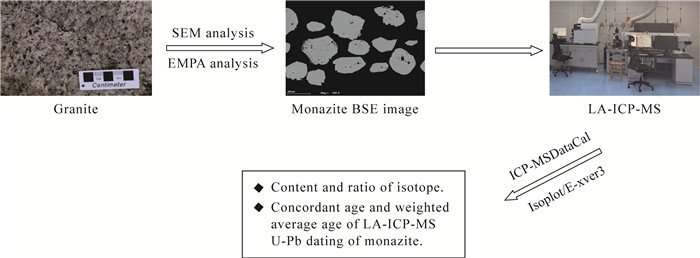
-
锆石富含Th和U,含有较少且稳定的普通Pb,是U-Pb同位素年代学研究中最常用的矿物[1-6]。产铀花岗岩的铀含量(20×10-6~40×10-6)普遍较高,其中的锆石铀含量也较高,会对锆石晶体结构造成辐射损伤,锆石发生蜕晶化而引起放射性Pb的丢失,导致测得的年龄结果谐和度偏低,年龄结果可靠性较低[5, 7-8]。此外,花岗岩型铀矿床内的流体活动通常较强,往往也正是因为后期流体对之前花岗岩进行交代或者蚀变作用,才会有活化的铀出来,最后沉淀出铀矿物,因此,锆石很可能遭受过流体作用,进而影响其定年结果的准确性。独居石[(LREE,Th)PO4]为一种磷酸盐,其中往往存在较多的轻稀土元素[9],如铈和镧。独居石在中酸性岩浆岩、沉积岩、变质岩中均可形成[4-5]。由于独居石的U、Th以及放射性成因Pb含量较高,普通Pb含量较低,且抵抗放射性损伤能力比锆石强[10],此外其封闭温度较高(约750℃)[11],独居石结晶后,其U-Th-Pb多处于封闭状态,不易受后期热液活动等地质事件的影响,且独居石的BSE图像没有环带和明亮区域变化,可以代表最原始的结晶年龄,因此独居石可以作为U-Pb同位素定年的矿物[12-13]。
长江铀矿田位于广东省北部,南岭构造带中段,矿田内分布诸多中大型矿床、矿点,如书楼丘矿床、棉花坑矿床、长排矿床等,铀矿类型主要为花岗岩型。前人对矿田内赋矿花岗岩成因、成岩时代、成岩构造背景和铀矿床的成矿流体来源[14-16]、矿床形成条件[17-19]、热液蚀变特征[20-21]、成矿年代[1, 22-24]等方面进行了诸多探索[23]。但是,前人对花岗岩成岩时代的研究,多采用锆石U-Pb同位素定年法,朱捌(2010)[16]运用LA-ICP-MS的方法测得长江岩体中粗粒黑云母花岗岩的锆石U-Pb年龄为142~144Ma;邓平等(2011)[14]运用SHRIMP法测得长江岩体中粒黑云母花岗岩的锆石U-Pb年龄为152~187Ma;黄国龙等(2014)[1]运用LA-ICP-MS法测得长江岩体中粒黑云母花岗岩的锆石U-Pb年龄为157~161Ma;傅丽雯(2015)[15]运用LA-ICP-MS法测得长江岩体中粒黑云母花岗岩的锆石U-Pb年龄为62~167Ma;钟福军(2018)[22]运用LA-ICP-MS法测得长江岩体中粒黑云母花岗岩的锆石U-Pb年龄为160~163Ma。黄国龙等(2012)[19]运用SHRIMP法测得粤北油洞岩体中粒小斑状二云母花岗岩的锆石U-Pb年龄为228~236Ma;张龙等(2016)[25]运用电子探针法测得油洞岩体中粒斑状二云母花岗岩的晶质铀矿的年龄为219~231Ma;钟福军(2018)[22]运用LA-ICP-MS法测得油洞岩体中粗粒小斑状二云母花岗岩的锆石U-Pb年龄为243~246Ma。可以看出,年龄数据较分散且变化范围较大(油洞岩体花岗岩的成岩时代为225~244Ma,长江岩体花岗岩的成岩时代为143~165Ma),赋矿花岗岩成岩年龄未得到准确限定,这是由于研究区的花岗岩多为高铀花岗岩,其中锆石的铀含量较高(1379×10-6~10612×10-6),容易发生蜕晶化,谐和图中的测点多发生右漂,且根据锆石阴极发光图像[1, 10, 14-17, 19-25],易受后期流体作用,或含有较多包裹体,从而影响年龄结果的准确性。
独居石抵抗放射性损伤的能力更强[10],且封闭温度超过750℃[11],不易被改造,BSE图像均匀无环带,表明未受后期流体作用,其U-Pb年龄准确度较高。据此,本文对油洞岩体和长江岩体分别开展LA-ICP-MS独居石U-Pb定年,精确厘定了这两个岩体的侵位时代,结合前人对长江矿田相关岩体的研究,探讨其形成的构造背景,补充该区域独居石U-Pb定年方法的研究。
1. 矿田地质特征
长江铀矿田主要出露长江岩体中粗粒黑云母花岗岩和油洞岩体中粗粒二云母花岗岩,少数细粒花岗岩脉[1]、伟晶岩脉和细晶岩脉侵位[26],此外,还出露少量燕山晚期辉绿岩、煌斑岩、辉长闪长岩等中基性岩,呈脉状产出[21],岩脉向NE或近EW延伸5~7km,脉宽约0.3~2m,部分中基性岩脉被后期构造破碎带或岩体切穿[22]。矿田内发育NE、NW、近NS向断裂带,其中NE向断裂构造活动强、规模大,包括里周、棉花坑、黄溪水断裂等[21](图 1),断裂带内主要由蚀变花岗岩组成,硅质热液活动强烈,有蚀变分带现象[20];NW向的油洞断裂构造活动次之,为重要的控矿构造[22];近NS向断裂构造活动弱、形成时间晚,呈密集平行脉产于里周断裂和黄溪水断裂之间,是矿田内主要的含矿构造[23],断裂密集带形态产状相似,规模不一[26]。
油洞岩体位于诸广南部复式岩体中部(图 1),出露面积约120km2,呈岩基、岩滴、岩枝产出,整体为近NS向展布,边界复杂曲折[19],为棉花坑、油洞和长排矿床的赋矿围岩。油洞岩体在地表出露的岩性以中粗粒二云母花岗岩为主,灰白色,中粗粒结构[19]。长江岩体位于诸广岩体中南部,产状以岩基状为主,其次为岩枝、岩滴状,出露面积约300km2,与毗邻的油洞岩体呈明显的侵入接触[1](图 1),为书楼坵矿床、棉花坑矿床的赋矿围岩[20]。主要为中粗粒黑云母花岗岩,局部出露细粒不等粒黑云母花岗岩[1]。
前人对长江铀矿田各矿床的花岗岩开展了大量的同位素年代学研究,采用锆石LA-ICP-MS、SHRIMP的U-Pb同位素定年法以及晶质铀矿的电子探针法等,初步厘定了岩体的成岩时代,构建了长江铀矿田的成岩年代学框架。如黄国龙等(2014)[1]运用LA-ICP-MS厘定了锆石U-Pb年龄为155~164Ma;张龙等(2016)[25]运用电子探针技术厘定棉花坑矿床花岗岩晶质铀矿物年龄为162~168Ma;钟福军等(2019)[23]运用LA-ICP-MS技术厘定书楼丘矿床辉长闪长岩的锆石U-Pb年龄为149~167Ma;朱捌(2010)[16]、邓平等(2011)[14]、黄国龙等(2012)[19]、傅丽雯(2015)[15]、钟福军(2018)[22]运用LA-ICP-MS或SHRIMP测得长江岩体花岗岩的成岩时代为143~165Ma;黄国龙等(2012)[19]运用LA-ICP-MS或SHRIMP测得油洞岩体花岗岩的锆石U-Pb年龄为228~246Ma;张龙(2016)[25]运用电子探针测得油洞岩体花岗岩的晶质铀矿的年龄为219~231Ma。上述成果推动了长江铀矿田岩浆活动与成岩年代学研究的重大发展。
2. 实验部分
本次研究的2件花岗岩样品(样品编号CJ1702-2、CJ1607),分别为长江铀矿田油洞岩体的中粗粒二云母花岗岩和长江岩体的中粗粒黑云母花岗岩,均采自新鲜的地表露头,采用独居石标准物质USGS44069作为外部标样,监控标样选用Trebilcock。
2.1 样品岩相学特征
中粗粒二云母花岗岩手标本为灰白色,中粗粒结构,块状构造(图 2a),主要矿物组成为长石和石英,长石包括钾长石和斜长石,还含有黑云母和白云母(图 2b)。其中,钾长石含量约25%~35%,粒度1.8~5.2mm,略呈半定向排列;斜长石以更长石为主,含量约25%~30%;石英呈他形粒状,波状消光,含量约25%~30%;黑云母为黑褐色,呈片状或团块状分布,含量约5%~8%;白云母与黑云母共生,白色,呈细片集合体,含量约2%~5%。副矿物主要有磷灰石、锆石、褐帘石、榍石等。
中粗粒黑云母花岗岩手标本为灰色-灰白色,中粗粒结构(图 2d),以长石和石英为主,黑云母次之(图 2e)。长石主要为钾长石和斜长石,钾长石的含量约35%,当其发生蚀变时呈现肉红色,主要发育高岭土化和绢云母化;斜长石为灰白色,也可呈浅绿色,为其发育绢云母化所致,含量约30%,此外,还出现钠长石化;石英含量约32%,多呈他形粒状;黑云母为黑褐色,自形程度较好,以片状为主,粒度差异较大,绿泥石化较发育,含量约5%。
2.2 样品分析方法
首先采用人工重砂法将独居石分选出来,在镜下挑出其中结构均一、透明度高的颗粒,将其粘于载玻片上,其上放置含有环氧树脂和固化剂充分混合物的PVC环,烘干,剥除样品靶[5]。再做打磨抛光处理后拍摄透射、反射和背散射(BSE)图像,以选取新鲜、无裂隙及包裹体的位置进行测试[5, 7, 27]。独居石制靶和背散射图像的拍摄工作均在东华理工大学核资源与环境国家重点实验室完成。
独居石U-Pb同位素测试工作在武汉上谱分析科技有限责任公司利用LA-ICP-MS完成。激光剥蚀系统为GeolasPro,该系统是由COMPexPro102ArF193nm准分子激光器和MicroLas光学系统两部分组成。电感耦合等离子体质谱仪为Agilent 7700e(美国Agilent公司)[5]。为了提高仪器的灵敏度,实验过程中往往选用氦气和氩气分别作为载气和补偿气,并通过一个T形装置混合后进入电感耦合等离子体质谱仪[5]。实验中所采用的激光束斑直径为16μm,频率为6Hz,能量密度为8J/cm2。每个测试点包括20~30s空白信号及50s样品信号采集时间。为了校正U-Pb、Th-Pb同位素分馏和仪器质量歧视,采用独居石标准物质USGS44069作为外部标样校正同位素比值[6, 28],监控标样选用Trebilcock以监控数据质量。运用ICP-MSDataCal10.9软件进行数据处理和普通铅校正,样品的年龄谐和图及其加权平均计算运用Isoplot/Ex-ver3完成。
3. 结果与讨论
3.1 独居石LA-ICP-MS分析结果
从背散射图像(图 3、图 4)可以看出,中粗粒二云母花岗岩(CJ1702-2)和中粗粒黑云母花岗岩(CJ1607)的独居石浅灰色,颗粒大小不一,自形-半自形,呈柱状或等轴状,长轴约40~100μm,长宽比为1:1至2:1,独居石成分均匀,内部结构十分均一,裂隙较少,大多数无明显分带现象,偶见岩浆环带存在,独居石颗粒边部发生晶棱圆化或呈港湾状结构。
花岗岩样品独居石U-Pb同位素测试结果见表 1。中粗粒二云母花岗岩样品CJ1702-2中独居石的Pb、Th、U含量分别为537×10-6~1064×10-6、54342×10-6~89332×10-6、1379×10-6~9708×10-6,其Th/U比值为6.13~56.03。该样品测试中共获23个有效数据,得到油洞岩体中粗粒二云母花岗岩年龄为220.7~234.6Ma,加权平均年龄为228.0±1.5Ma(MSWD=0.82,图 5)。
表 1 LA-ICP-MS独居石U-Pb定年数据Table 1. Ages of LA-ICP-MS U-Pb dating of monazite样品CJ1702-2:油洞岩体 测点 207Pb/206Pb 207Pb/235U 206Pb/238U 207Pb/235U 206Pb/238U 同位素比值 2σ 同位素比值 2σ 同位素比值 2σ 年龄(Ma) 2σ 年龄(Ma) 2σ CJ1702-2-01 0.0516 0.0016 0.2590 0.0062 0.0364 0.0003 233.9 9.0 230.7 7.2 CJ1702-2-02 0.0531 0.0016 0.2673 0.0063 0.0365 0.0003 240.5 9.2 231.0 7.2 CJ1702-2-03 0.0516 0.0046 0.2563 0.0174 0.0360 0.0005 231.7 17.2 228.2 7.4 CJ1702-2-04 0.0511 0.0016 0.2551 0.0064 0.0362 0.0003 230.7 9.0 229.3 7.1 CJ1702-2-05 0.0491 0.0029 0.2420 0.0109 0.0357 0.0004 220.0 11.9 226.4 7.3 CJ1702-2-06 0.0523 0.0030 0.2534 0.0111 0.0352 0.0004 229.3 12.2 222.7 7.1 CJ1702-2-07 0.0510 0.0023 0.2531 0.0090 0.0360 0.0004 229.1 10.7 228.0 7.3 CJ1702-2-08 0.0523 0.0023 0.2581 0.0086 0.0358 0.0003 233.2 10.4 226.9 7.1 CJ1702-2-09 0.0512 0.0029 0.2560 0.0112 0.0363 0.0004 231.4 12.2 229.7 7.4 CJ1702-2-10 0.0522 0.0040 0.2584 0.0152 0.0359 0.0005 233.4 15.4 227.5 7.6 CJ1702-2-11 0.0524 0.0023 0.2592 0.0088 0.0359 0.0003 234.0 10.6 227.3 7.1 CJ1702-2-12 0.0505 0.0027 0.2528 0.0101 0.0363 0.0003 228.8 11.4 229.8 7.2 CJ1702-2-13 0.0518 0.0016 0.2585 0.0064 0.0362 0.0003 233.5 9.1 229.1 7.1 CJ1702-2-14 0.0498 0.0026 0.2511 0.0098 0.0365 0.0003 227.4 11.2 231.3 7.3 CJ1702-2-16 0.0519 0.0050 0.2633 0.0194 0.0368 0.0006 237.3 18.8 232.9 8.0 CJ1702-2-20 0.0518 0.0039 0.2544 0.0146 0.0356 0.0004 230.1 14.9 225.7 7.3 CJ1702-2-21 0.0526 0.0019 0.2561 0.0071 0.0353 0.0003 231.5 9.5 223.6 7.0 CJ1702-2-22 0.0545 0.0030 0.2666 0.0116 0.0355 0.0005 239.9 12.7 224.7 7.5 CJ1702-2-25 0.0520 0.0028 0.2619 0.0108 0.0365 0.0005 236.2 12.1 231.1 7.5 CJ1702-2-26 0.0496 0.0022 0.2380 0.0081 0.0348 0.0003 216.8 9.8 220.7 6.9 CJ1702-2-27 0.0503 0.0021 0.2494 0.0081 0.0360 0.0003 226.1 10.0 227.7 7.2 CJ1702-2-28 0.0537 0.0028 0.2746 0.0112 0.0371 0.0004 246.4 12.5 234.6 7.5 CJ1702-2-30 0.0498 0.0018 0.2480 0.0071 0.0361 0.0003 225.0 9.4 228.7 7.2 样品CJ1607:长江岩体 测点 207Pb/206Pb 207Pb/235U 206Pb/238U 207Pb/235U 206Pb/238U 同位素比值 2σ 同位素比值 2σ 同位素比值 2σ 年龄(Ma) 2σ 年龄(Ma) 2σ CJ1607-01 0.0419 0.0051 0.1484 0.0150 0.0257 0.0006 140.5 14.8 163.6 6.4 CJ1607-02 0.0526 0.0059 0.1756 0.0166 0.0242 0.0007 164.3 16.3 154.3 6.2 CJ1607-03 0.0412 0.0054 0.1427 0.0154 0.0251 0.0007 135.5 15.2 160.0 6.4 CJ1607-05 0.0506 0.0070 0.1767 0.0206 0.0253 0.0009 165.2 19.9 161.1 7.5 CJ1607-06 0.0409 0.0063 0.1370 0.0174 0.0243 0.0006 130.4 17.0 154.7 6.2 CJ1607-07 0.0494 0.0053 0.1649 0.0149 0.0242 0.0006 155.0 14.8 154.2 6.2 CJ1607-08 0.0552 0.0058 0.1854 0.0161 0.0243 0.0006 172.7 15.9 155.0 5.9 CJ1607-09 0.0436 0.0055 0.1491 0.0155 0.0248 0.0007 141.1 15.3 158.0 6.5 CJ1607-10 0.0467 0.0060 0.1589 0.0169 0.0247 0.0007 149.8 16.5 157.2 6.4 CJ1607-11 0.0501 0.0062 0.1694 0.0174 0.0245 0.0007 158.9 17.0 156.2 6.4 CJ1607-12 0.0539 0.0078 0.1800 0.0216 0.0242 0.0007 168.1 20.8 154.4 6.6 CJ1607-13 0.0748 0.0081 0.2527 0.0228 0.0245 0.0006 228.8 21.7 156.0 6.0 CJ1607-14 0.0601 0.0069 0.2028 0.0194 0.0245 0.0006 187.5 18.8 155.9 6.2 CJ1607-15 0.0505 0.0065 0.1710 0.0182 0.0246 0.0007 160.3 17.7 156.5 6.3 中粗粒黑云母花岗岩样品CJ1607中独居石的Pb、Th、U含量分别为146.2×10-6~284.9×10-6、3165×10-6~10032×10-6、5951×10-6~10612×10-6,其中Pb含量较少,Th/U比值为0.93~1.93。该样品测试中共取得14个有效数据,得到长江岩体中粗粒黑云母花岗岩年龄为154.2~164.6Ma,加权平均年龄为156.8±1.7Ma(MSWD=0.76,图 5)。
3.2 定年数据的可靠性
数据的可靠性主要体现在以下五个方面。
(1) 样品前处理:在双目显微镜下选择颗粒大、内部结构均一、透明度高的独居石,再通过拍摄透射光、反射光和背散射(BSE)图像,挑选出未发生蚀变、无裂隙及包裹体的位置进行测试。
(2) 分析测试方法:①采用较小的激光束斑直径(16μm)和较低的频率(6Hz)对样品进行剥蚀。②选用较均一的独居石标准物质USGS44069[28]和玻璃标准物质NIST610[4]作为外部标样来校正样品测试结果,以降低基体效应[29]对测试结果的影响。③采用信号平滑装置来提高信号的稳定性,以氦气和氩气分别作为载气和补偿气来调节灵敏度[24]。④每测6个独居石样品点,交替测定两次主标样独居石USGS44069,以提高分析精度。
(3) 独居石标样USGS44069测试结果为425.1±4.2Ma(n=14),标样Trebilcock测试结果为273.4±3.1Ma(n=18),均与参考值在误差范围内一致[4, 8, 12, 30],标样Trebilcock在测试过程中用于控制数据质量。
(4) 本次测试选用的标样Trebilcock成分均一,Th含量较高,而研究对象长江岩体、油洞岩体中的独居石也富Th,基体效应不明显。
(5) 此外,虽然独居石中Th含量变化较大,但不存在明显的基体效应[12, 31]。因此,可以认为本次实验获得的独居石U-Pb年龄的可靠性较好,可代表花岗岩的形成年龄。
3.3 岩体地球化学特征
油洞岩体与长江岩体具有相似的地球化学组成,具体表现在:①主量元素。二者均具有较高的SiO2含量,但油洞岩体的SiO2含量变化较小,长江岩体SiO2含量变化较大;二者碱含量均较高,在SiO2-(K2O+Na2O)图解上均处于亚碱性花岗岩范围内;在A/CNK-NK/A图解上,油洞岩体花岗岩大部分处于亚碱性强过铝质花岗岩范围内,少部分为亚碱性弱过铝质花岗岩,长江岩体花岗岩以亚碱性弱过铝质花岗岩为主,其次为过碱性准铝质-亚碱性强过铝质花岗岩。②微量元素。油洞岩体花岗岩富集Rb、Th、U、Ta、La、Ce、Pr、Nd、Sm、Dy、Y,亏损Ba、Nb、Sr、Zr、Eu、Ti[19],“谷”和“峰”均较明显,长江岩体花岗岩富集Rb、Th、U、Ta、Dy,明显亏损Ba、Sr、Ti和轻微亏损Nb、Zr[1, 21]。二者均属于低Ba-Sr花岗岩,且球粒陨石标准化曲线左侧隆起,右侧平缓,与南岭的壳源型花岗岩类似[1],Ba、Sr、Ti的亏损可能与成岩过程中斜长石、钛铁矿和磷灰石的分离结晶有关[21]。③油洞岩体和长江岩体的稀土元素配分模式相似,呈现轻稀土富集“右倾”型[21],稀土元素总量较高,Eu的亏损较明显,且基本无Ce异常,轻重稀土元素分馏均较明显。
3.4 成岩时代
对于粤北长江铀矿田的成岩成矿年龄,前人已经作了很多研究,主要以锆石作为测试矿物,部分学者以晶质铀矿为测试矿物,得到的年龄数据范围较大,相对散乱(图 6)。
由于花岗岩本身铀含量(15.7×10-6~659×10-6)较高,其中的锆石铀含量(1379×10-6~10612×10-6)比普通锆石高很多,在进行LA-ICP-MS锆石U-Pb定年时,由于铀含量高,锆石受到了辐射损伤而发生蜕晶化,U-Pb同位素体系遭受破坏,导致锆石U-Pb定年数据误差较大。有学者认为,只有长时间遭受辐射才可能导致晶格损伤,因此对于年轻的高铀锆石(铀含量大于0.01%),基质效应对年龄影响较小[29],但通过对前人测得的锆石铀含量及U-Pb年龄对比发现,当锆石中铀含量较高时,其U-Pb年龄较分散[1, 19, 32],随着铀含量升高,得到的年龄数据越来越分散,即使剔除部分高U测点,谐和度仍有右漂现象[22]。
本次对长江岩体和油洞岩体的独居石进行LA-ICP-MS U-Pb定年,给出油洞岩体中粗粒二云母花岗岩年龄为228.0±1.5Ma,长江岩体中粗粒黑云母花岗岩年龄为156.8±1.7Ma。与朱捌(2010)[16]、邓平等(2011)[14]、黄国龙等(2012, 2014)[19, 1]、田泽瑾(2014)[29]、傅丽雯(2015)[15]、张龙等(2016)[25]和钟福军(2018)[22]对油洞岩体和长江岩体的锆石U-Pb同位素测年结果基本吻合,也与南岭花岗岩带印支期和燕山早期花岗岩成岩年龄(249~207Ma,180~140Ma)基本一致,进一步证实了长江铀矿田内岩浆岩格局主要为印支期和燕山期花岗岩。
3.5 长江铀矿田构造演化背景
南岭成矿带下庄和诸广矿田的花岗岩型铀矿床主要形成于燕山晚期,成矿年龄趋向于较年轻,年龄范围大致为47~138Ma,峰值为60~85Ma[22-24]。因此,铀矿化主要发生在白垩—新生代造山后伸展期。但也有一些矿床形成于燕山早期(如146~165Ma的竹山下矿床)[23],表明铀的早期矿化也发生过,可能是在相对高温的条件下形成的。因此,中国华南铀成矿带主要可以分为两类:一类发生于燕山早期,与燕山期花岗岩侵入同步,以高温成矿流体为特征;另一类对应于燕山晚期铀矿化,也是主要的铀成矿事件,以低温成矿流体为特征,即华南铀矿床的铀矿化是与花岗岩的侵位是对应的[22],反映了当时华南整体的多期次热事件。
3.6 岩体成岩构造背景
油洞岩体独居石LA-ICP-MS U-Pb年龄为228.0±1.5Ma,此时华南地块与印支地块的强烈碰撞(258~243Ma)[22]刚刚结束,伴随着东特提斯松潘海的消减和关闭,整个华南地壳,尤其是泥盆纪—三叠纪的沉积盖层发生全面褶皱变形,并产生了一系列逆冲推覆构造[19],导致地壳加厚,当碰撞应力减弱后,地壳发生自然减薄,形成了华南地区的伸展构造环境[19, 22-25]。Carter等(2001)也曾指出,东南亚的印支造山运动即将结束时,区域应力场存在由挤压状态转变为拉伸状态的可能性[19]。而在早中生代,花岗岩大多是在地壳减薄、减压熔融为主导的机制下形成的[19],且油洞岩体花岗岩的地球化学特征表明,油洞岩体花岗岩大部分处于亚碱性强过铝质花岗岩范围内,少部分为亚碱性弱过铝质花岗岩,微量元素蛛网图与南岭地区的壳源型花岗岩相似,岩石形成于后碰撞环境。因此,油洞岩体为印支晚期岩浆活动的产物,印支运动引起地壳加厚,随着加厚地壳自然伸展、减薄,由泥砂质变质岩部分熔融形成。
长江岩体独居石LA-ICP-MS U-Pb年龄为156.8±1.7Ma,此时南岭地区存在A型花岗岩类、玄武质岩石、钾玄质岩石以及双峰式火山岩,表明地壳正处于伸展、减薄的构造环境[1]。印支运动后,地壳从加厚转变为伸展减薄,由于受到古太平洋板块持续俯冲(15~20Ma),使原有薄弱构造带附近进一步伸展[29, 32-35]。长江岩体花岗岩地球化学特征表明,该岩体花岗岩以亚碱性弱过铝质花岗岩为主,其次为过碱性准铝质-亚碱性强过铝质花岗岩;微量元素蛛网图与油洞岩体及南岭地区的壳源型花岗岩相似,岩石形成于后碰撞环境[25]。因此,长江岩体为燕山早期岩浆活动的产物,印支运动后,地壳处于伸展减薄的构造环境,又受太平洋板块俯冲,进一步伸展减薄,使变质杂砂岩发生部分熔融而形成长江岩体花岗岩。
4. 结论
独居石是花岗岩中广泛存在的含铀副矿物,铀和钍含量均较高,可达10000×10-6,普通铅含量低,约100×10-6~1000×10-6。本文在光学显微镜的基础上,运用LA-ICP-MS技术对长江铀矿田赋矿花岗岩中的独居石进行U-Pb定年。研究结果表明油洞岩体中粗粒二云母花岗岩独居石U-Pb年龄为228.0±1.5Ma,为印支晚期岩浆活动的产物,印支运动引起地壳加厚,随着加厚地壳自然伸展、减薄,由泥砂质变质岩部分熔融形成;长江岩体中粗粒黑云母花岗岩独居石U-Pb年龄为156.8±1.7Ma,为燕山早期岩浆活动的产物,印支运动后,地壳处于伸展减薄的构造环境,又受太平洋板块俯冲,进一步伸展减薄,使变质杂砂岩发生部分熔融而形成。
本次基于副矿物原位微区分析技术开展的年代学研究,对粤北长江铀矿田中的油洞岩体和长江岩体中的进行独居石U-Pb定年,有效地约束了二者的成岩年龄,并将独居石U-Pb年龄与前人研究进行对比,认为其可以用于限定高铀花岗岩的成岩时代,对矿田后续的年代学及成矿演化研究具有一定的指导意义。
-
表 1 LA-ICP-MS独居石U-Pb定年数据
Table 1 Ages of LA-ICP-MS U-Pb dating of monazite
样品CJ1702-2:油洞岩体 测点 207Pb/206Pb 207Pb/235U 206Pb/238U 207Pb/235U 206Pb/238U 同位素比值 2σ 同位素比值 2σ 同位素比值 2σ 年龄(Ma) 2σ 年龄(Ma) 2σ CJ1702-2-01 0.0516 0.0016 0.2590 0.0062 0.0364 0.0003 233.9 9.0 230.7 7.2 CJ1702-2-02 0.0531 0.0016 0.2673 0.0063 0.0365 0.0003 240.5 9.2 231.0 7.2 CJ1702-2-03 0.0516 0.0046 0.2563 0.0174 0.0360 0.0005 231.7 17.2 228.2 7.4 CJ1702-2-04 0.0511 0.0016 0.2551 0.0064 0.0362 0.0003 230.7 9.0 229.3 7.1 CJ1702-2-05 0.0491 0.0029 0.2420 0.0109 0.0357 0.0004 220.0 11.9 226.4 7.3 CJ1702-2-06 0.0523 0.0030 0.2534 0.0111 0.0352 0.0004 229.3 12.2 222.7 7.1 CJ1702-2-07 0.0510 0.0023 0.2531 0.0090 0.0360 0.0004 229.1 10.7 228.0 7.3 CJ1702-2-08 0.0523 0.0023 0.2581 0.0086 0.0358 0.0003 233.2 10.4 226.9 7.1 CJ1702-2-09 0.0512 0.0029 0.2560 0.0112 0.0363 0.0004 231.4 12.2 229.7 7.4 CJ1702-2-10 0.0522 0.0040 0.2584 0.0152 0.0359 0.0005 233.4 15.4 227.5 7.6 CJ1702-2-11 0.0524 0.0023 0.2592 0.0088 0.0359 0.0003 234.0 10.6 227.3 7.1 CJ1702-2-12 0.0505 0.0027 0.2528 0.0101 0.0363 0.0003 228.8 11.4 229.8 7.2 CJ1702-2-13 0.0518 0.0016 0.2585 0.0064 0.0362 0.0003 233.5 9.1 229.1 7.1 CJ1702-2-14 0.0498 0.0026 0.2511 0.0098 0.0365 0.0003 227.4 11.2 231.3 7.3 CJ1702-2-16 0.0519 0.0050 0.2633 0.0194 0.0368 0.0006 237.3 18.8 232.9 8.0 CJ1702-2-20 0.0518 0.0039 0.2544 0.0146 0.0356 0.0004 230.1 14.9 225.7 7.3 CJ1702-2-21 0.0526 0.0019 0.2561 0.0071 0.0353 0.0003 231.5 9.5 223.6 7.0 CJ1702-2-22 0.0545 0.0030 0.2666 0.0116 0.0355 0.0005 239.9 12.7 224.7 7.5 CJ1702-2-25 0.0520 0.0028 0.2619 0.0108 0.0365 0.0005 236.2 12.1 231.1 7.5 CJ1702-2-26 0.0496 0.0022 0.2380 0.0081 0.0348 0.0003 216.8 9.8 220.7 6.9 CJ1702-2-27 0.0503 0.0021 0.2494 0.0081 0.0360 0.0003 226.1 10.0 227.7 7.2 CJ1702-2-28 0.0537 0.0028 0.2746 0.0112 0.0371 0.0004 246.4 12.5 234.6 7.5 CJ1702-2-30 0.0498 0.0018 0.2480 0.0071 0.0361 0.0003 225.0 9.4 228.7 7.2 样品CJ1607:长江岩体 测点 207Pb/206Pb 207Pb/235U 206Pb/238U 207Pb/235U 206Pb/238U 同位素比值 2σ 同位素比值 2σ 同位素比值 2σ 年龄(Ma) 2σ 年龄(Ma) 2σ CJ1607-01 0.0419 0.0051 0.1484 0.0150 0.0257 0.0006 140.5 14.8 163.6 6.4 CJ1607-02 0.0526 0.0059 0.1756 0.0166 0.0242 0.0007 164.3 16.3 154.3 6.2 CJ1607-03 0.0412 0.0054 0.1427 0.0154 0.0251 0.0007 135.5 15.2 160.0 6.4 CJ1607-05 0.0506 0.0070 0.1767 0.0206 0.0253 0.0009 165.2 19.9 161.1 7.5 CJ1607-06 0.0409 0.0063 0.1370 0.0174 0.0243 0.0006 130.4 17.0 154.7 6.2 CJ1607-07 0.0494 0.0053 0.1649 0.0149 0.0242 0.0006 155.0 14.8 154.2 6.2 CJ1607-08 0.0552 0.0058 0.1854 0.0161 0.0243 0.0006 172.7 15.9 155.0 5.9 CJ1607-09 0.0436 0.0055 0.1491 0.0155 0.0248 0.0007 141.1 15.3 158.0 6.5 CJ1607-10 0.0467 0.0060 0.1589 0.0169 0.0247 0.0007 149.8 16.5 157.2 6.4 CJ1607-11 0.0501 0.0062 0.1694 0.0174 0.0245 0.0007 158.9 17.0 156.2 6.4 CJ1607-12 0.0539 0.0078 0.1800 0.0216 0.0242 0.0007 168.1 20.8 154.4 6.6 CJ1607-13 0.0748 0.0081 0.2527 0.0228 0.0245 0.0006 228.8 21.7 156.0 6.0 CJ1607-14 0.0601 0.0069 0.2028 0.0194 0.0245 0.0006 187.5 18.8 155.9 6.2 CJ1607-15 0.0505 0.0065 0.1710 0.0182 0.0246 0.0007 160.3 17.7 156.5 6.3 -
黄国龙, 刘鑫扬, 孙立强, 等. 粤北长江岩体的锆石U-Pb定年、地球化学特征及其成因研究[J]. 地质学报, 2014, 88(5): 836-849. https://www.cnki.com.cn/Article/CJFDTOTAL-DZXE201405003.htm Huang G L, Liu X Y, Sun L Q, et al. Zircon U-Pb dating, geochemical characteristics and genesis of the Changjiang granite in northern Guangdong[J]. Acta Geologica Sinica, 2014, 88(5): 836-849. https://www.cnki.com.cn/Article/CJFDTOTAL-DZXE201405003.htm
Yang T J, Sun X M, Shi G Y, et al. LA-ICP-MS U-Pb dating of cenozoic rutile inclusions in the Yuanjiang marble-hosted ruby deposit, Ailao Shan Complex, Southwest China[J]. Minerals, 2021, 11(4): 1-9.
骆金诚, 石少华, 陈佑纬, 等. 铀矿床定年研究进展评述[J]. 岩石学报, 2019, 35(2): 589-605. https://www.cnki.com.cn/Article/CJFDTOTAL-YSXB201902019.htm Luo J C, Shi S H, Chen Y W, et al. Review on dating of uranium mineralization[J]. Acta Petrologica Sinica, 2019, 35(2): 589-605. https://www.cnki.com.cn/Article/CJFDTOTAL-YSXB201902019.htm
胡国辉, 张琪琪, 李建锋, 等. 辽东地区中生代花岗岩的侵位时代: 锆石和独居石U-Pb年代学[J]. 地球科学, 2020, 45(11): 3962-3981. https://www.cnki.com.cn/Article/CJFDTOTAL-DQKX202011006.htm Hu G H, Zhang Q Q, Li J F, et al. Emplacement ages of Mesozoic granites in Liaodong area: Constraints from zircon and monazite U-Pb dating[J]. Earth Science, 2020, 45(11): 3962-3981. https://www.cnki.com.cn/Article/CJFDTOTAL-DQKX202011006.htm
宓奎峰, 杨艳, 颜廷杰, 等. 内蒙古沙麦钨矿区高分异花岗岩独居石U-Pb定年及成矿意义[J]. 现代地质, 2020, 34(3): 504-513. https://www.cnki.com.cn/Article/CJFDTOTAL-XDDZ202003008.htm Mi K F, Yang Y, Yan T J, et al. In-situ monazite U-Pb geochronology of highly fractionated granites in Shamai tungsten deposit, Inner Mongolia and its mineralization significance[J]. Geoscience, 2020, 34(3): 504-513. https://www.cnki.com.cn/Article/CJFDTOTAL-XDDZ202003008.htm
叶亚康, 周家云, 周雄. 川西塔公松林口岩体LA-ICP-MS锆石U-Pb年龄与地球化学特征[J]. 岩矿测试, 2020, 39(6): 921-933. doi: 10.15898/j.cnki.11-2131/td.202005060008 Ye Y K, Zhou J Y, Zhou X. Zircon LA-ICP-MS U-Pb age and geochemical features of the Songlinkou pluton, western Sichuan[J]. Rock and Mineral Analysis, 2020, 39(6): 921-933. doi: 10.15898/j.cnki.11-2131/td.202005060008
叶海敏, 张翔, 朱云鹤. 江西石门寺钨多金属矿床花岗岩独居石U-Pb精确定年及地质意义[J]. 大地构造与成矿学, 2016, 40(1): 58-70. https://www.cnki.com.cn/Article/CJFDTOTAL-DGYK201601006.htm Ye H M, Zhang X, Zhu Y H. In-situ monazite U-Pb geochronology of granites in Shimensi tungsten polymetallic deposit, Jiangxi Province and its geological significance[J]. Geotectonica et Metallogenia, 2016, 40(1): 58-70. https://www.cnki.com.cn/Article/CJFDTOTAL-DGYK201601006.htm
陈意, 胡兆初, 贾丽辉, 等. 微束分析测试技术十年(2011~2020)进展与展望[J]. 矿物岩石地球化学通报, 2021, 40(1): 1-35, 253. https://www.cnki.com.cn/Article/CJFDTOTAL-KYDH202101004.htm Chen Y, Hu Z C, Jia L H, et al. Progress of microbeam analytical technologies in the past decade (2011-2020) and prospect[J]. Bulletin of Mineralogy, Petrology and Geochemistry, 2021, 40(1): 1-35, 253. https://www.cnki.com.cn/Article/CJFDTOTAL-KYDH202101004.htm
张聪, 刘晓瑜, 杨经绥, 等. 柴北缘超高压变质带的新元古代变质作用——来自锡铁山副片麻岩的岩石学及独居石年代学证据[J]. 岩石学报, 2016, 32(12): 3715-3728. https://www.cnki.com.cn/Article/CJFDTOTAL-YSXB201612011.htm Zhang C, Liu X Y, Yang J S, et al. The Neoproterozoic metamorphism of North Qaidam UHPM belt, western China: Constrain from petrological study and monazite dating of paragneiss[J]. Acta Petrologica Sinica, 2016, 32(12): 3715-3728. https://www.cnki.com.cn/Article/CJFDTOTAL-YSXB201612011.htm
吴黎光, 李献华. 独居石微区同位素和元素分析及地质应用[J]. 矿物岩石地球化学通报, 2020, 39(6): 1077-1094, 1064, 1066. https://www.cnki.com.cn/Article/CJFDTOTAL-KYDH202006003.htm Wu L G, Li X H. Isotopic and elemental microanalyses of monazite and its geological application[J]. Bulletin of Mineralogy, Petrology and Geochemistry, 2020, 39(6): 1077-1094, 1064, 1066. https://www.cnki.com.cn/Article/CJFDTOTAL-KYDH202006003.htm
Harrison T M, Catlos E J, Montel J M. U-Th-Pb dating of phosphate minerals[J]. Reviews in Mineralogy Geochemistry-Exploration Environment Analysis, 2002, 48(1): 524-558. https://www.researchgate.net/publication/236660479_U-Th-Pb_Dating_of_Phosphate_Minerals
胡欢, 王汝成, 邵春景, 等. 基于独居石标样Trebilcock的激光剥蚀等离子体质谱微区原位U-Th-Pb同位素定年方法[J]. 南京大学学报(自然科学版), 2020, 56(6): 763-773. https://www.cnki.com.cn/Article/CJFDTOTAL-NJDZ202006001.htm Hu H, Wang R C, Shao C J, et al. In situ LA-ICP-MS U-Th-Pb isotopic dating of monazite based on the monazite standard Trebilcock[J]. Journal of Nanjing University (Natural Science), 2020, 56(6): 763-773. https://www.cnki.com.cn/Article/CJFDTOTAL-NJDZ202006001.htm
唐文龙, 付超, 邹健, 等. 胶东唐家沟金矿床独居石LA-ICP-MS U-Pb同位素年代学及其地质意义[J]. 地质学报, 2021, 95(3): 809-821. doi: 10.3969/j.issn.0001-5717.2021.03.014 Tang W L, Fu C, Zou J, et al. LA-ICP-MS U-Pb isotopic chronology of monazite from Tangjiagou gold deposit in Jiaodong and its geological significance[J]. Acta Geological Sinica, 2021, 95(3): 809-821. doi: 10.3969/j.issn.0001-5717.2021.03.014
邓平, 任纪舜, 凌洪飞, 等. 诸广山南体燕山期花岗岩的锆石SHRIMP U-Pb年龄及其构造意义[J]. 地质论评, 2011, 57(6): 881-888. https://www.cnki.com.cn/Article/CJFDTOTAL-DZLP201106011.htm Deng P, Ren J S, Ling H F, et al. Yanshanian granite batholiths of southern Zhuguang Mountian: SHRIMP zircon U-Pb dating and tectonic implications[J]. Geological Review, 2011, 57(6): 881-888. https://www.cnki.com.cn/Article/CJFDTOTAL-DZLP201106011.htm
傅丽雯. 粤北302铀矿床围岩蚀变分带、成矿流体与成矿物质来源研究[D]. 南京: 南京大学, 2015: 1-78. Fu L W. Study on wall rock alteration zoning, the source of ore-forming fluid and ore-forming maternal of the 302 uranium deposit in northern Guangdong Province[D]. Nanjing: Nanjing University, 2015: 1-78.
朱捌. 地幔流体与铀成矿作用研究——以诸广山南部铀矿田为例[D]. 成都: 成都理工大学, 2010. Zhu B. The study of mantle liquid and uranium metallogenesis-Take uranium ore field of south Zhuguang mountain as an example[D]. Chengdu: Chengdu University of Technology, 2010.
胡瑞忠, 骆金诚, 陈佑纬, 等. 华南铀矿床研究若干进展[J]. 岩石学报, 2019, 35(9): 2625-2636. https://www.cnki.com.cn/Article/CJFDTOTAL-YSXB201909001.htm Hu R Z, Luo J C, Chen Y W, et al. Several progresses in the study of uranium deposits in South China[J]. Acta Petrologica Sinica, 2019, 35(9): 2625-2636. https://www.cnki.com.cn/Article/CJFDTOTAL-YSXB201909001.htm
骆金诚, 石少华, 陈佑纬, 等. 铀矿床定年研究进展评述[J]. 岩石学报, 2019, 35(2): 589-605. https://www.cnki.com.cn/Article/CJFDTOTAL-YSXB201902019.htm Luo J C, Shi S H, Chen Y W, et al. Review on dating of uranium mineralization[J]. Acta Petrologica Sinica, 2019, 35(2): 589-605. https://www.cnki.com.cn/Article/CJFDTOTAL-YSXB201902019.htm
黄国龙, 曹豪杰, 凌洪飞, 等. 粤北油洞岩体SHRIMP锆石U-Pb年龄、地球化学特征及其成因研究[J]. 地质学报, 2012, 86(4): 577-586. doi: 10.3969/j.issn.0001-5717.2012.04.004 Huang G L, Cao H J, Ling H F, et al. Zircon SHRIMP U-Pb age, geochemistry and genesis of the Youdong Granite in northern Guangdong[J]. Acta Geologica Sinica, 2012, 86(4): 577-586. doi: 10.3969/j.issn.0001-5717.2012.04.004
张龙, 陈振宇, 李胜荣, 等. 粤北棉花坑(302)铀矿床围岩蚀变分带的铀矿物研究[J]. 岩石学报, 2018, 34(9): 2657-2670. https://www.cnki.com.cn/Article/CJFDTOTAL-YSXB201809010.htm Zhang L, Chen Z Y, Li S R, et al. Characteristics of uranium minerals in wall-rock alteration zones of the Mianhuakeng (No. 302) uranium deposit, northern Guangdong, South China[J]. Acta Petrologica Sinica, 2018, 34(9): 2657-2670. https://www.cnki.com.cn/Article/CJFDTOTAL-YSXB201809010.htm
吴德海, 夏菲, 潘家永, 等. 粤北棉花坑铀矿床热液蚀变与物质迁移研究[J]. 岩石学报, 2019, 35(9): 2745-2764. https://www.cnki.com.cn/Article/CJFDTOTAL-YSXB201909008.htm Wu D H, Xia F, Pan J Y, et al. Hydrothermal alteration and material migration of Mianhuakeng uranium deposit in northern Guangdong[J]. Acta Petrologica Sinica, 2019, 35(9): 2745-2764. https://www.cnki.com.cn/Article/CJFDTOTAL-YSXB201909008.htm
钟福军. 华南花岗岩型铀矿成岩成矿作用研究——以粤北长江铀矿田为例[D]. 南昌: 东华理工大学, 2018. Zhong F J. Petrogenesis and mineralization of granite type uranium deposits in South China: A case study of the Changjiang uranium ore field in northern Guangdong Province[D]. Nanchang: East China University of Technology, 2018.
钟福军, 严杰, 夏菲, 等. 粤北长江花岗岩型铀矿田沥青铀矿原位U-Pb年代学研究及其地质意义[J]. 岩石学报, 2019, 35(9): 2727-2744. https://www.cnki.com.cn/Article/CJFDTOTAL-YSXB201909007.htm Zhong F J, Yan J, Xia F, et al. In-situ U-Pb isotope geochronology of uraninite for Changjiang granite-type uranium ore field in northern Guangdong, China: Implications for uranium mineralization[J]. Acta Petrologica Sinica, 2019, 35(9): 2727-2744. https://www.cnki.com.cn/Article/CJFDTOTAL-YSXB201909007.htm
张伟盟, 严杰, 钟福军, 等. 粤北石角围花岗岩型铀矿床沥青铀矿LA-ICP-MS原位U-Pb定年研究[J]. 岩矿测试, 2019, 38(4): 449-460. doi: 10.15898/j.cnki.11-2131/td.201901160007 Zhang W M, Yan J, Zhong F J, et al. In situ LA-ICP-MS U-Pb dating of uraninite from the Shijiaowei granite-type uranium deposit, northern Guangdong Province[J]. Rock and Mineral Analysis, 2019, 38(4): 449-460. doi: 10.15898/j.cnki.11-2131/td.201901160007
张龙, 陈振宇, 田泽瑾, 等. 电子探针测年方法应用于粤北长江岩体的铀矿物年龄研究[J]. 岩矿测试, 2016, 35(1): 98-107. doi: 10.15898/j.cnki.11-2131/td.2016.01.016 Zhang L, Chen Z Y, Tian Z J, et al. The application of electron microprobe dating method on uranium minerals in Changjiang granite, northern Guangdong[J]. Rock and Mineral Analysis, 2016, 35(1): 98-107. doi: 10.15898/j.cnki.11-2131/td.2016.01.016
刘军港, 李子颖, 聂江涛, 等. 诸广南长江铀矿田油洞断裂性质及其找矿意义研究[J]. 铀矿地质, 2019, 35(4): 199-205. https://www.cnki.com.cn/Article/CJFDTOTAL-YKDZ201904002.htm Liu J G, Li Z Y, Nie J T, et al. Study on structural properties and prospecting significance of Youdong fault in Changjiang uranium orefield, South Zhuguang[J]. Uranium Geology, 35(4): 199-205. https://www.cnki.com.cn/Article/CJFDTOTAL-YKDZ201904002.htm
万建军, 潘春蓉, 严杰, 等. 应用电子探针-扫描电镜研究陕西华阳川铀稀有多金属矿床稀土矿物特征[J]. 岩矿测试, 2021, 40(1): 145-155. doi: 10.15898/j.cnki.11-2131/td.202005060009 Wan J J, Pan C R, Yan J, et al. EMPA-SEM study on the rare earth minerals from the Huayangchuan uranium rare polymetallic deposit, Shaanxi Province[J]. Rock and Mineral Analysis, 2021, 40(1): 145-155. doi: 10.15898/j.cnki.11-2131/td.202005060009
胡国辉, 周艳艳, 张拴宏, 等. 吕梁地区古元古代花岗片麻岩成因及变质时代: 锆石和独居石U-Pb年龄及锆石Hf同位素证据[J]. 岩石学报, 2020, 36(12): 3631-3653. doi: 10.18654/1000-0569/2020.12.05 Hu G H, Zhou Y Y, Zhang S H, et al. Petrogenesis and metamorphic age of Palaeoproterozoic granitic gneisses in Lvliang area: Constraints from zircon and monazite U-Pb ages and Hf isotopes[J]. Acta Petrologica Sinica, 2020, 36(12): 3631-3653. doi: 10.18654/1000-0569/2020.12.05
Tian Z J. Uranium-bearing and barren granites from the Zhuguang Mountain: Geochronology, element geochemistry, mineralogy comparison[M]. Beijing: China University of Geosciences (Beijing), 2014: 1-103.
肖志斌, 耿建珍, 涂家润, 等. 砂岩型铀矿微区原位U-Pb同位素定年技术方法研究[J]. 岩矿测试, 2020, 39(2): 262-273. doi: 10.15898/j.cnki.11-2131/td.201908120129 Xiao Z B, Geng J Z, Tu J R, et al. In situ U-Pb isotope dating techniques for sandstone-type uranium deposits[J]. Rock and Mineral Analysis, 2020, 39(2): 262-273. doi: 10.15898/j.cnki.11-2131/td.201908120129
Ling X X, Huyskens M H, Li Q L, et al. Mineralogy and petrology; Recent research from Chinese Academy of Sciences highlight findings in mineralogy and petrology (Monazite RW-1: A homogenous natural reference material for SIMS U-Pb and Th-Pb isotopic analysis)[J]. Resource Week, 2017, 111(2): 163-172.
张龙. 粤北诸广山复式岩体的铀矿物研究[D]. 北京: 中国地质大学(北京), 2016: 1-125. Zhang L. Study on uranium minerals of Zhuguangshan complex pluton, northern Guangdong[D]. Beijing: China University of Geosciences (Beijing), 2016: 1-125.
罗强, 许幼, 伏顺成, 等. 诸广长江矿田铀矿地质特征及找矿潜力[J]. 矿产勘查, 2020, 11(2): 276-285. https://www.cnki.com.cn/Article/CJFDTOTAL-YSJS202002012.htm Luo Q, Xu Y, Fu S C, et al. Uranium metallogenic geological characteristics and prospecting potential in Zhuguang Changjiang orefield[J]. Mineral Exploration, 2020, 11(2): 276-285. https://www.cnki.com.cn/Article/CJFDTOTAL-YSJS202002012.htm
张万良. 中国主要铀矿类型、特点及其空间分布[J]. 地质找矿论丛, 2017, 32(4): 526-534. https://www.cnki.com.cn/Article/CJFDTOTAL-DZZK201704002.htm Zhang W L. The main types and characteristics and spatial distribution of uranium deposits in China[J]. Contributions to Geology and Mineral Resources Research, 2017, 32(4): 526-534. https://www.cnki.com.cn/Article/CJFDTOTAL-DZZK201704002.htm
林锦荣, 李子颖, 胡志华, 等. 热液型铀矿空间定位的控制因素[J]. 铀矿地质, 2016, 32(6): 333-339. doi: 10.3969/j.issn.1000-0658.2016.06.002 Lin J R, Li Z Y, Hu Z H, et al. Controlling factors for the spatial positioning of hydrothermal uranium orefield[J]. Uranium Geology, 2016, 32(6): 333-339. doi: 10.3969/j.issn.1000-0658.2016.06.002
-
期刊类型引用(1)
1. 孙琳,张敏,郭彩娟,宁卓,张瑜,秦骏,张巍. 非水相液体污染场地源区自然消除研究进展. 岩矿测试. 2022(05): 704-716 .  本站查看
本站查看
其他类型引用(3)



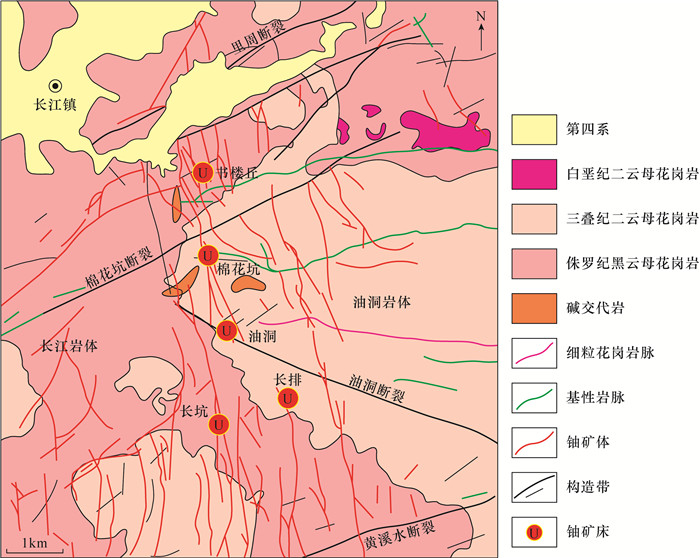
 下载:
下载:
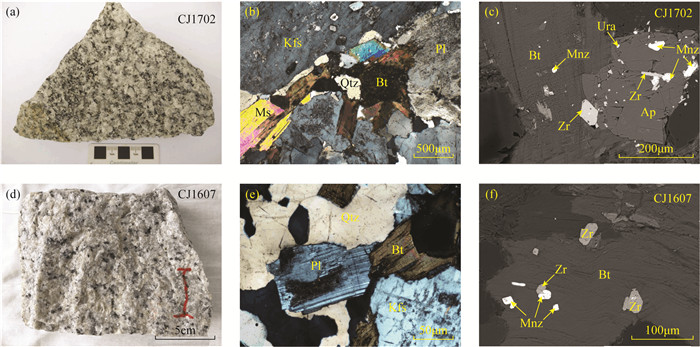
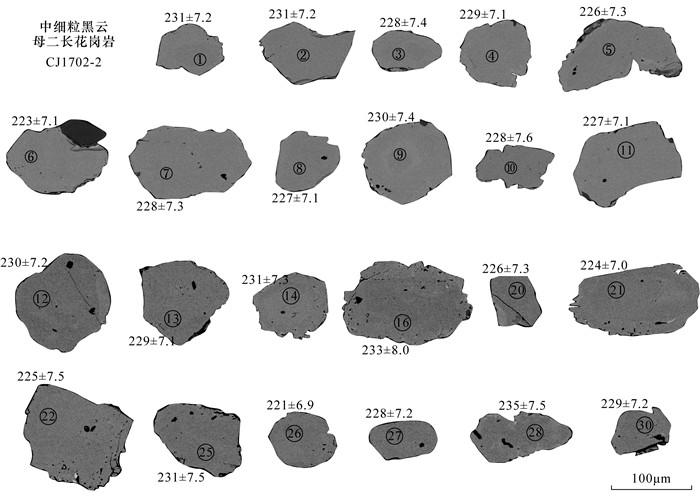
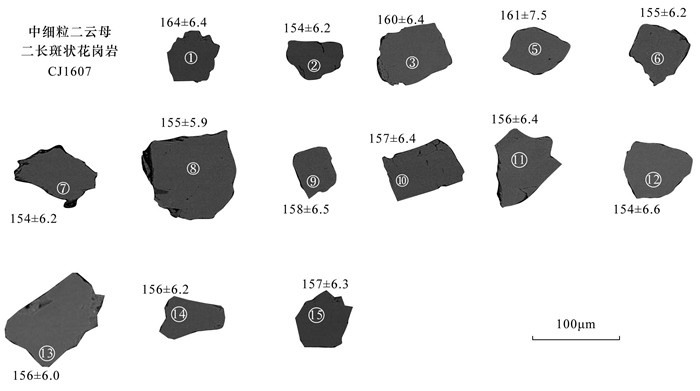
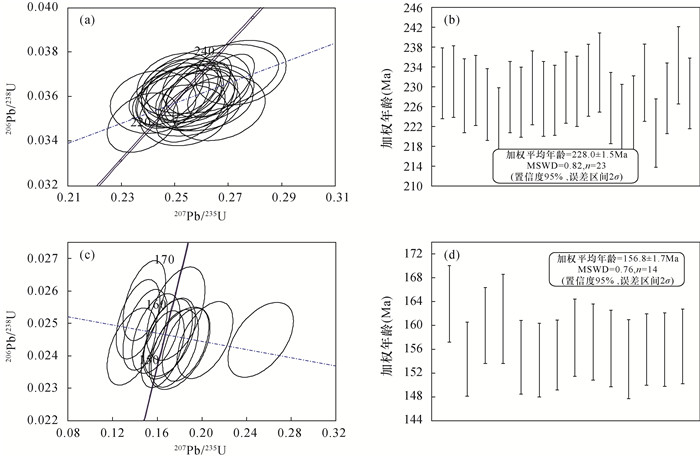
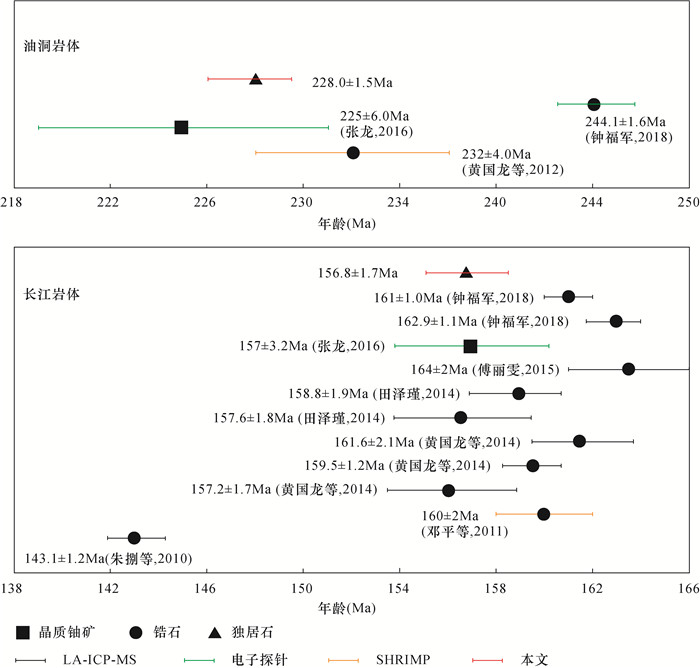
 京公网安备 11010202008159号
京公网安备 11010202008159号